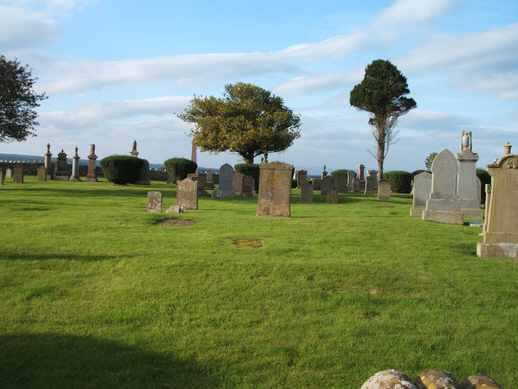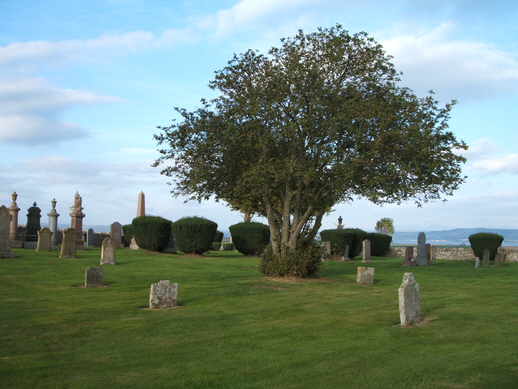Inverness Deanery
Brachelie
Parish Church: OS Ref: NGR NH 796529 H.E.S. No: NH75SE 7 Dedication: St Ewan (St Adomnán)
Associated Chapels: (none known)
Little or nothing can be seen of the old parish church of St Ewen, which is first encountered in the historical record in 1224. In that year, plans were afoot to annexe the parsonage revenues of Brachelie (with those of Petty), to provide the endowment for a new canonry in the cathedral at Elgin and these came to fruition a year later after the bishop, Andrew de Moravia, returned from the Vatican.The building on this site was still in use in 1688 and remains of it were to be seen in 1792. The graveyard is still there to be found and is well maintained. It has excellent views over the Firth to the north.
St Ewen's church, Brachelie, stood on the 'main road' to the Chanonry Ferry which was operated by the canons of the Cathedral of Ross across the narrows from what is now Fort George. Wade's Military Road followed this same ancient route. From early days, the Chapter of Ross jealously guarded their possession of this ferry and its revenues (which would have been considerable) and also the parish of Ardersier which, although it was on the south side of the Firth, was always a part of the Diocese of Ross. Bain suggests two reasons for thinking that this, like Petty, was a Columban foundation. Firstly, its churchyard was a place of extraordinary sanctity, and still continues to be regarded as specially sacred ground, even by many far removed from the immediate district. Secondly, it seemed unlikely that the Roman Church would have made it a separate parish, looking at its small extent, had it not existed previously as an ecclesiastical foundation. The old glebe was at Balsparden.


Above: Brachelie Churchyard - the position of the yew bushes may mark out the foundations of the old church.
The dedication of this church to St Ewan is another example of the corruption of St Adomnán's name via St Eunan. This corrupt form of the Saint's name is encountered on a number of occasions in the north-east (e.g. Insh, Barevan) and we should not be misled into the fanciful creations of certain authors who attempt other explanations.
1224 (20 April) Bishop Andrew, who was at the Lateran, obtained permission from the Pope (Honorius III) to use the garbal teinds of the churches of Petyn and Brocholin (Petty & Brachelie), and Abyrlouer and Butruthyn (Aberlour & Botriphne) to create two prebends, the Pope reserving to himself and his successors the right of provision to the prebends.2
1225-1226 The parsonage revenues - garbal tiends - (with those of Petty) were annexed to form a prebend for one of the canons of the Cathedral by Bishop Andrew de Moravia. At some point thereafter the two vicarages were also united to form a single cure.3
1226 (9 October) W. de M (Walter de Moravia) says that the second tithes of the lands of Bracholy had been in the hands of his family for at least 80 years - they were held of the Bishop of Moray.1
There is a very sad epitaph on one of the stones in the graveyard. It reads:
No shoes or stockings upon his feet,
Amusement both for small and great
Was poor Johnnie Laddie.
Parish Clergy:
(none known)
1. Moray Reg., no.31, p.23
2. Moray Reg., no.67, p.72
3. Moray Reg., no.61, p.66
e-mail: admin@cushnieent.com
© 2019 Cushnie Enterprises
